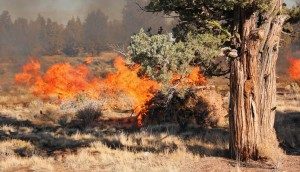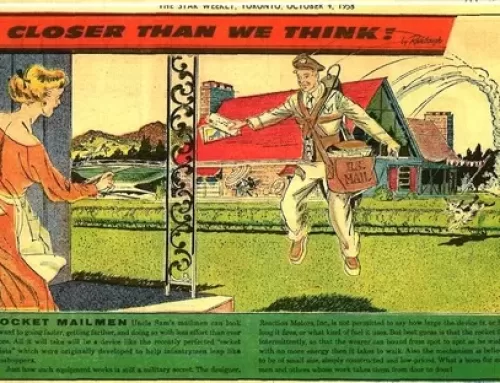A valuable tool for fighting large wildfires are manned aerial water tankers that can carry anywhere from hundreds to thousands of gallons of water or fire retardant. The Forest Service has stated in the past that it is well-served by the flexibility provided by moderate-sized aircraft, as opposed to large jets such as 747s or IL-76s. But in the future, could this flexibility be enhanced even further by the trends we are now seeing in sensor and small automated aircraft technology?
Consider if the “Internet of Trees” was a reality, where within the forest any fire, whether started by lightening or other cause, could immediately be detected by the nearby trees; in essence, raising the alarm themselves. Real-time analysis of the trees’ data – augmented by that of the ubiquitous insect-sized flying sensors already in the area – provide the precise location, type, intensity, and apparent growth pattern to the new blaze. It’s not occurring in an area where natural fires are allowed to burn on their own, so the automated system swings into immediate action. The signal is broadcast to multiple stations in the vicinity. These aren’t manned ranger stations, but rather small solar-powered shelters for aerial drones. A few of them are occupied constantly, others in the area were filled only recently, thanks to the accurate predictions for a high likelihood of lightening strikes in that region over the course of the next 48 hours.
With a new fire detected nearby, the pre-positioned drones are activated. Some are small, nimble, high-endurance reconnaissance craft that flit to the hotspot to assess the effectiveness of the overall response and are more stable than the insect-sized sensors in the chaotic air currents surrounding the blaze. Most of the drones are larger tanker aircraft, each capable of carrying 10 kg (22 lbs), or almost three gallons of water or retardant. They arrive shortly, converging in a swarm from all points of the compass. By the time they show up, the recon drones have pinpointed the extent of the fire, which is only a few minutes old and has spread only a few meters so far. The tankers go to work in a coordinated fashion: each in turn drops its liquid cargo precisely where it will do the most good, then heads away to refill, either at a nearby stream or, in drought conditions, at the water supply cached at the nearest drone shelters. Meanwhile, others arrive, delivering a constant rain of three gallon drops on the struggling fire, until nothing remains except a cloud of steam and a patch of blackened underbrush. The tankers then depart the area for their bases, as the recon drones hover above, keeping watch against flare-ups, measuring the welcome drop in ground and air temperature, and sending an after-action report to the Forest Service monitors.
Fortunately, this one had been caught in time. But occasionally, a fire grows too fast for such early preventive measures. In such a case, the automated system still plays a key role by delaying and guiding the spread. This buys time and reduces damage, until firefighters can arrive in the area to confront the blaze using more traditional and powerful means. Kurt Callaway
(image from https://blogs.cdc.gov/publichealthmatters/files/2012/12/wildfire-5-300×172.jpg)



